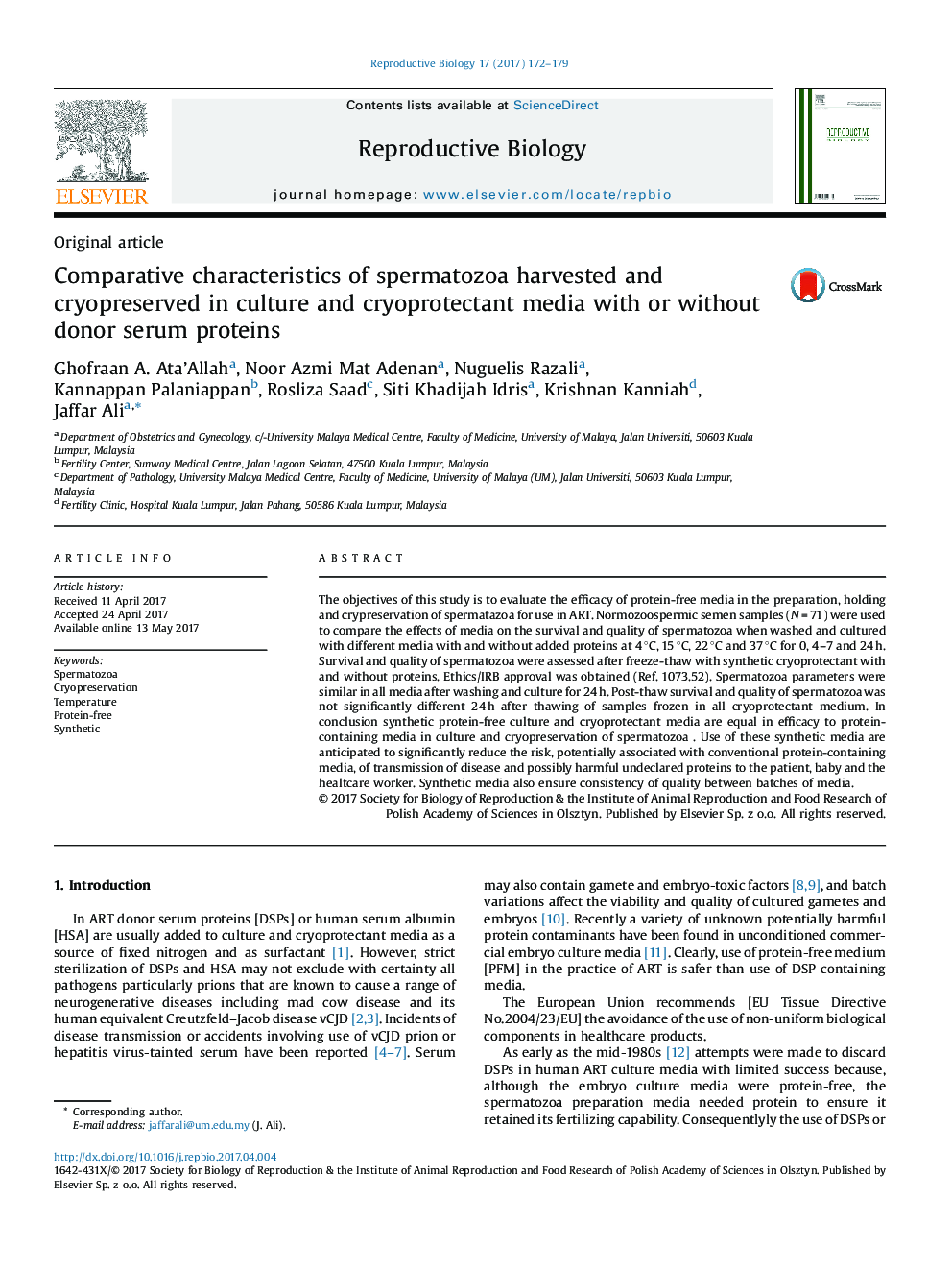| کد مقاله | کد نشریه | سال انتشار | مقاله انگلیسی | نسخه تمام متن |
|---|---|---|---|---|
| 5519057 | 1401098 | 2017 | 8 صفحه PDF | دانلود رایگان |
- This study has demonstrated that synthetic protein-free culture, handling and sperm cryoprotectant media are equal in efficacy to protein-containing media in culture and cryopreservation of spermatatazoa.
- Use of these synthetic media are anticipated to significantly reduce the risk of transmission of disease and possibly harmful undeclared proteins to the patient, baby and the healtcare worker with conventional protein-containing media.
- Synthetic media being completely chemically defined also ensure consistency of quality between batches of media.
The objectives of this study is to evaluate the efficacy of protein-free media in the preparation, holding and crypreservation of spermatazoa for use in ART. Normozoospermic semen samples (N = 71) were used to compare the effects of media on the survival and quality of spermatozoa when washed and cultured with different media with and without added proteins at 4 °C, 15 °C, 22 °C and 37 °C for 0, 4-7 and 24 h. Survival and quality of spermatozoa were assessed after freeze-thaw with synthetic cryoprotectant with and without proteins. Ethics/IRB approval was obtained (Ref. 1073.52). Spermatozoa parameters were similar in all media after washing and culture for 24 h. Post-thaw survival and quality of spermatozoa was not significantly different 24 h after thawing of samples frozen in all cryoprotectant medium. In conclusion synthetic protein-free culture and cryoprotectant media are equal in efficacy to protein-containing media in culture and cryopreservation of spermatozoa . Use of these synthetic media are anticipated to significantly reduce the risk, potentially associated with conventional protein-containing media, of transmission of disease and possibly harmful undeclared proteins to the patient, baby and the healtcare worker. Synthetic media also ensure consistency of quality between batches of media.
Journal: Reproductive Biology - Volume 17, Issue 2, June 2017, Pages 172-179
